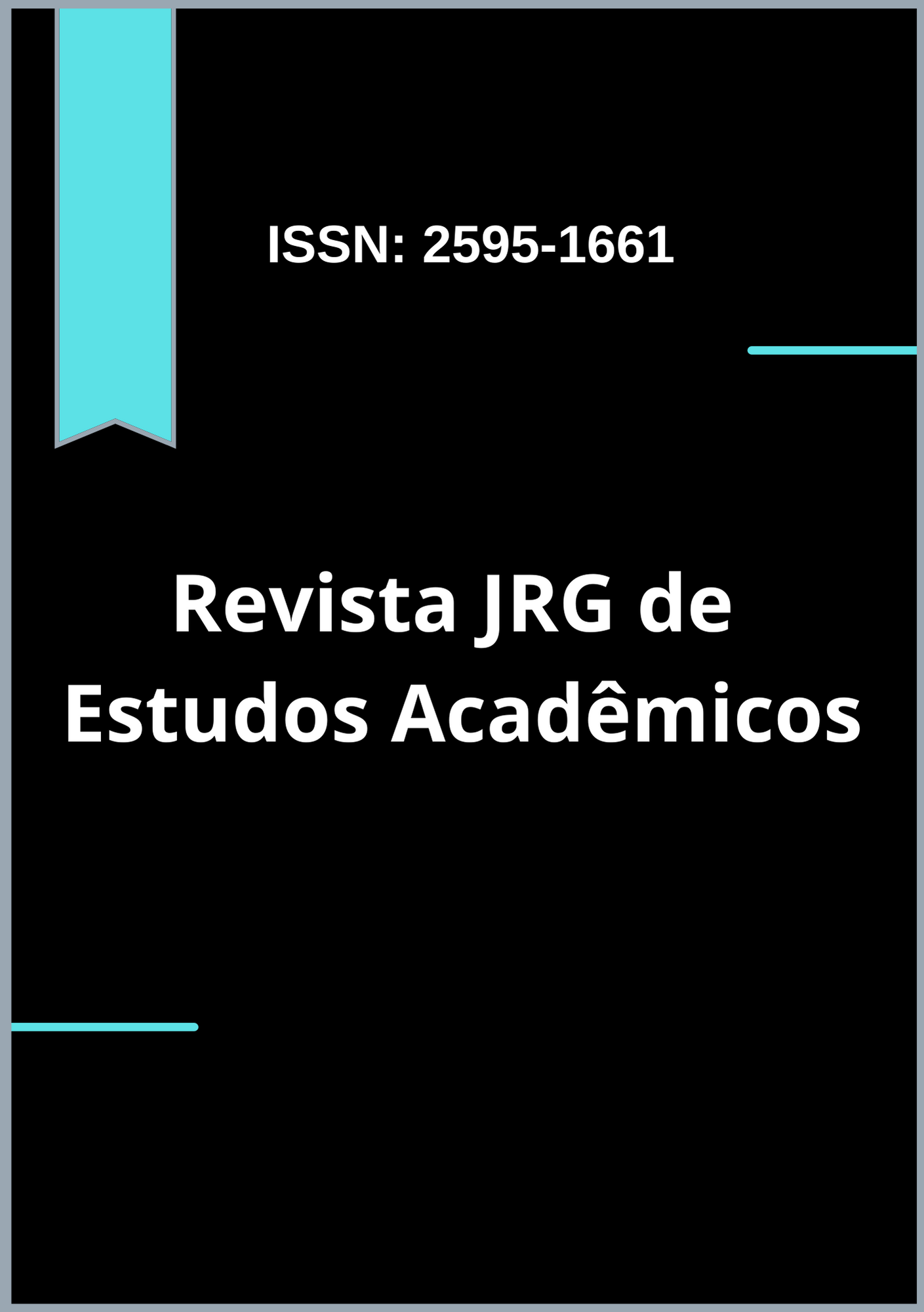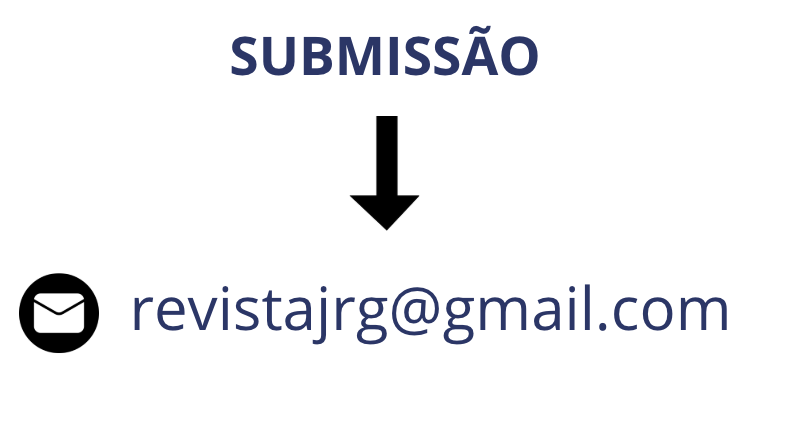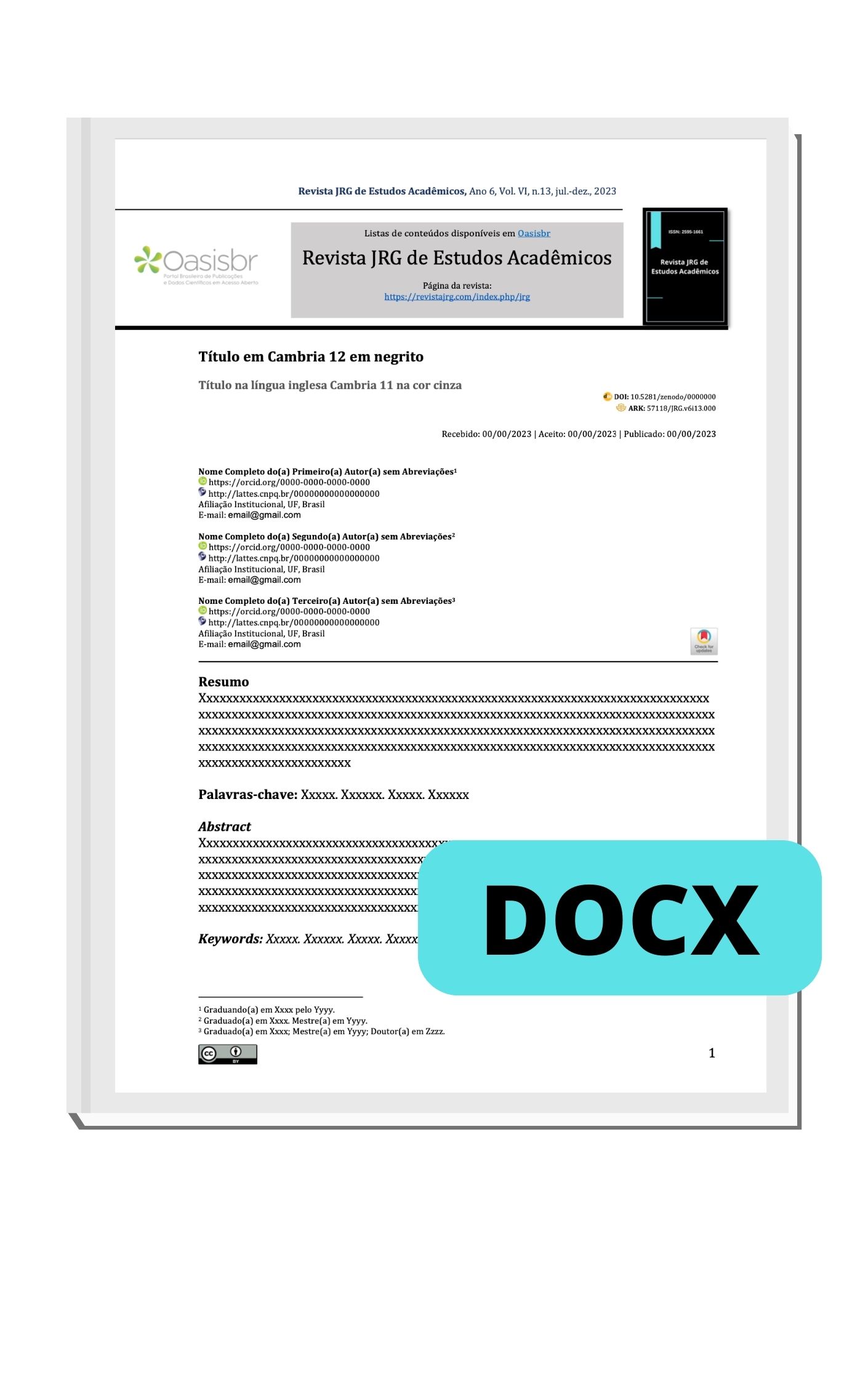Temporal analysis of land use and occupation in the municipality of Gurjão-PB
DOI:
https://doi.org/10.55892/jrg.v8i19.2511Keywords:
Environmental Degradation, NDVI, Semi-Arid RegionAbstract
The municipality of Gurjão, located in the semi-arid region of Paraíba, Brazil, has been experiencing increasing environmental degradation driven by human activities and climatic variations. This study analyzed the dynamics of land cover in the region from 1985 to 2025 using the Normalized Difference Vegetation Index (NDVI), derived from Landsat-5 and Landsat-8 satellite imagery. The results revealed a significant decline in average NDVI values, indicating a reduction in vegetative vigor and an expansion of exposed soil areas. Shrub vegetation, which predominated in the early decades, showed continuous regression, especially after 1995, highlighting the intensification of agricultural practices, deforestation, and decreasing rainfall as key factors in this degradation. The multitemporal analysis identified clear spatial patterns of vegetation fragmentation, particularly in areas under greater anthropogenic pressure. NDVI proved to be an effective tool for environmental monitoring, enabling the assessment of cumulative ecological impacts and supporting sustainable land-use planning. The findings underscore the urgent need for public policies aimed at restoring native vegetation and promoting sustainable resource management, as a strategy to mitigate desertification and ensure ecological resilience in the region.
Downloads
References
AESA - Agência Executiva de Gestão de Águas do Estado da Paraíba, 2025. Volumes dos Açudes. Disponível em: <http://www.aesa.pb.gov.br/chuvas. acesso em 20 de mai de 2025.
ANDRADE, M. C. DE O. A terra eo homem no Nordeste, 2005.
CHEN, L., MA, Z., ZHAO, T. Modeling and analysis of the potential impacts on regional climate due to vegetation degradation over arid and semi-arid regions of China. Climatic Change, v. 144, n. 03, p. 4613473, 2017.
COSTA, T. C. C. et al. Phytomass mapping of the "Seridó Caatinga" vegetation by the Plant Area and the Normalized Difference Vegetation Indeces. Scientia Agricola, v. 59, n. 4, p. 707-715, out./dez. 2002.
DA VEIGA BELTRAME, A. Diagnóstico do meio físico de bacias hidrográficas: modelo e aplicação. Universidade Federal de Santa Catarina, 1994.
LOUZADA, A. Gestão ambiental, Conceitos e definições. 2013 Recuperado de: www.ebah.com.br/content/ABAAABQDYAJ/gestao-ambiental-conceitosdefinicoes. Acesso em 04/05/2025].
MACEDO, C. E. S. Dinâmica espaço-temporal da cobertura vegetal e fatores contribuintes à desertificação na Sub-bacia Hidrográfica do Açude Forquilha-CE. 2023.
MARACAJÁ, N. De F. et al. Percepções e ações em desertificação no município de São João do Cariri. Semiárido paraibano. 2014.
NETO, I., XAVIER, R., & CUNHA, L. Patrimônio Geomorfológico do município de Gurjão, região semiárida da Paraíba, Brasil. GOT: Revista de Geografia e Ordenamento do Território, (19), 235. 2020
OLIVEIRA, L. D. de et al. Geotecnologias aplicadas a degradação ambiental da subbacia do Rio Piancó no semiárido paraibano: Uma análise espaço-temporal. 2024.
PEREIRA, J. A. V. A degradação da cobertura vegetal e a erosão dos solos como indicadores de áreas desertificadas: uma análise da microbacia hidrográfica do Riacho Mucutú/PB. 2021.
PERUZZO, J. S. et al. Sensoriamento remoto aplicado ao monitoramento ambiental da bacia do Alto Piranhas, Semiárido Nordestino (Brasil). Revista Brasileira de Meio Ambiente, v. 7, n. 3, 2019.
ROSSATO, L.; MARENGO, J. A.; ANGELIS, C. F. D.; PIRES, L. B. M.; MENDIONDO, E. M. Impact of soil moisture over Palmer Drought Severity Index and its future projections in Brazil. Revista Brasileira de Recursos Hídricos, v. 22, 2017.
ROUSE, J. W; HAAS, R. H.; SCHELL, J. A.; DEERING, D. W. Monitoring vegetation systems in the Great Plains with ERTS. In: FREDEN, S. C.; MERCANTI, E. P.; BECKER, M. (Eds.). Third Earth Resources Technology Satellite – 1 Syposium. Volume I: Technical Presentations, NASA SP-351. Washington, D.C.: 1974. p. 309–317.
SANTOS NASCIMENTO, S.; VIANA DE LIMA, E. R.; SOUZA DE LIMA, P. P. Uso do NDVI na Análise Temporal da Degradação da Caatinga na Sub‐Bacia do Alto Paraíba. Okara: Geografia em debate, v. 8, n. 1, 2014
SILVA, M. F. da. Uma análise do bioma caatinga no município de Gado Bravo-PB através do Índice Vegetação por Diferença Normalizada. 2016.
SILVA, D. A. M.; MOURA, M. O. Registros de desastres associados à estiagem e seca na região do Alto Sertão da Paraíba. Revista de Geociências do Nordeste, v. 4, p. 126- 136, 2018
SOARES, D. B. Degradação ambiental no semiárido pernambucano: Contribuição ao estudo da desertificação. 2012. 71 f. Dissertação de Mestrado em Desenvolvimento e Meio Ambiente. Universidade Federal de Pernambuco-UFPE. 2012
TOMÉ, I. M. Avaliação ambiental em áreas de preservação permanente em Catalão (GO): uma contribuição ao planejamento. 2025.
RUBIRA, F. G. Definição e diferenciação dos conceitos de áreas verdes/espaços livres e degradação ambiental/impacto ambiental. Caderno de Geografia, v. 26, n. 45, p. 134- 150, 2016.
USGS – United States Geological Survey. Catálogo de Imagens Landsat. Disponível em acesso em 20 maio 2025.











































